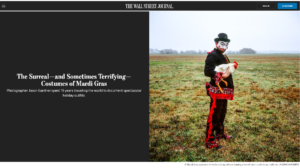How Critical Mass Can Launch Your Career; In Focus with Jason Gardner
Interview by Polly Gaillard
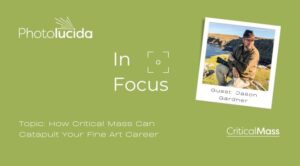
You can see Jason’s work in person at his exhibit and book launch, Ted & Nune Studio, 45 Main Street, Hastings on Hudson, April 6 – May 19, 2024, with an opening reception on April 6th from 4 – 8 pm.
Photolucida is pleased to announce our new series: In Focus. These videos and articles will help artists prepare their Critical Mass 2024 submissions — and registration for CM is right around the corner: May 31, 2024! For our first episode of In Focus, I had the pleasure of spending some time on Zoom with Jason Gardner to discuss We The Spirits, his Critical Mass 2022 Top 50 finalist portfolio, along with his successes following his win. Jason generously shared personal insight and professional advice for photographers entering the competition. You can watch a video version of our interview on Photolucida’s YouTube Channel.
PG: I’m so happy to speak with you today about your portfolio, We The Spirits. Can you briefly describe the series?
JG: We the Spirits is a study of the traditional winter masquerade, commonly known as Carnival — photographed in 15 countries and spanning over 15 years. It started when I photographed my first book in the northeast of Brazil, a state called Pernambuco. I made four or five visits over eight years, each visit being a month. I went deep into this culture, and when I moved to Europe, I started exploring more of the Carnival culture here. We the Spirits is a monograph of medium-format portraits of traditional Carnival characters. To do that, I had to do the research and do the photojournalism to get access — my process was to photograph it during the festival but not to be interruptive. I don’t stop the ritual. I don’t make a special appointment. I don’t bring lights. I do it all with ambient light.
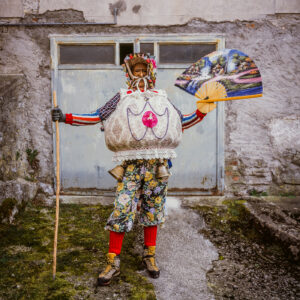
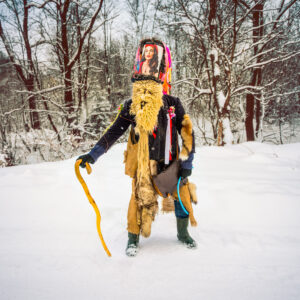 .
. 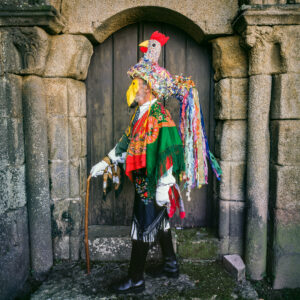
PG: What was the genesis of the project?
JG: I was based in New York as a photographer. I started out by photographing musicians commercially — then I started photographing more prominent musicians, mid-career and then high-level career music covers, magazines, albums, etc. When I started showing my work to curators and photo editors, they said, “Well, this is great, but I want to see a body of personal work.” So, I thought, I love music, and I love traveling, and I haven’t been to Brazil yet. Let’s go to Brazil and do a project about traditional music. It was kind of that basic. I did a lot of research beforehand, learned some Portuguese, and I ended up going to Pernambuco repeatedly. First, I discovered a couple of music groups when I was there off-season, and when they saw some photos I’d done, they said, “This is great, but you have to come back during Carnival when all the music happens.”
I went to one Carnival for a few weeks and realized I got some great images, but I only scratched the surface. So, I went back to another Carnival and another one and then started getting invited to music practices and religious ceremonies. That was the first book, A Flower on the Mouth. But when I was still based in New York, the years that I couldn’t go to Carnival in Brazil, I started thinking about what other Carnivals are like compared to my knowledge of this place. And so, I checked out Louisiana, not just New Orleans, but Cajun country. I visited the Caribbean, Trinidad, and the Dominican Republic, among other places. When I moved to France in 2016, I decided to continue exploring what it’s like in Europe and West Africa.
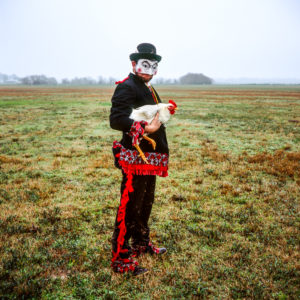
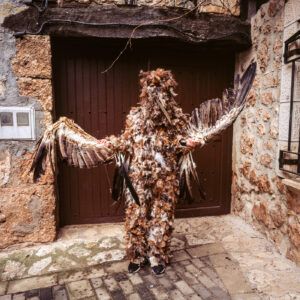 .
.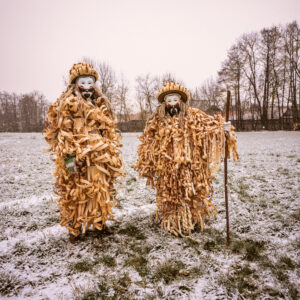
PG: How did you come about entering Critical Mass in 2022?
JG: I think I entered once before, so it was on my radar, but many of my colleagues have either won or applied to Critical Mass over the years. It was definitely on my list. And when the project was at a certain point and I wanted to pitch to publishers, I thought, “Okay, I will select a few higher-level competitions and contests and start with that.”
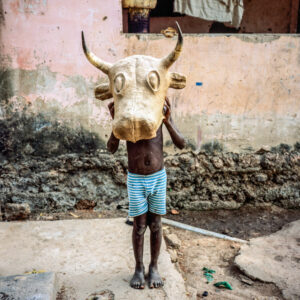
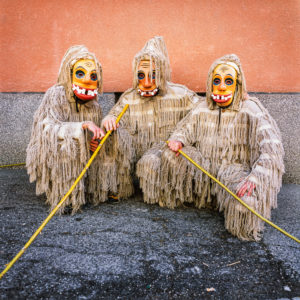

PG: Can you tell me about some good things that happened to you after you became a Top 50 finalist?
JG: Well, one thing right away was the prestige and wow factor. Many of my contemporaries, other fine art photographers, photo editors, and book editors, said, “Oh, you got Critical Mass!” It was definitely a feather in my cap. Also, the nice thing was the timing in 2022 — the Top 50 was announced only a couple of weeks before I went to Houston FotoFest for the portfolio reviews. So that was great, and when I looked at the list of the reviewers, there were five or six people who I knew had juried Critical Mass —there was a great crossover. The first thing I mentioned when I sat down to unpack my prints was, “I was in the Top 50 of Critical Mass this year.” And they told me they had noticed that.
After things calmed down, I contacted jurors and reviewers to remind them of my work. I didn’t say, “Please publish me,” but “Here’s my contact info link.” I got a lot of great responses, both short-term and long-term connections. It really paid off about a year and a half later when I was published in the Wall Street Journal when launching my book. Wall Street Journal photo editor Pia Peterson Haggerty had juried CM and said to keep in touch, and then she published my work. The timing ended up being a great thing. Then, the day I launched the book in the US on Mardi Gras (Feb. 13, 2024), the WSJ posted it on their main Instagram. They have about 4 million followers, and it was wild! A few other opportunities came from that directly.
PG: What kind of advice can you give other artists who submit to CM?
JG: A couple of things are just general advice. For example, I worked on the edit repeatedly. It’s brutal — a ten-image portfolio, ten images are brutal.
PG: Right, how do you tell a story in ten images?
JG: Difficult. Definitely. A couple of weeks after Fotofest, one of the reviewers who is now a friend and who was a CM juror, said, “You edited the shit out of that project. You edited that really tightly.” And I not only invested time in the edit, but I ran it by a few trusted colleagues, a photo editor friend — people with different perspectives, ones I trust. And we did the — let’s get 50 images down to 20. Okay, let’s get 20 down to 10 — let’s talk about each one and why it was selected specifically for the project. Each one must be strong, and each one has to fit.
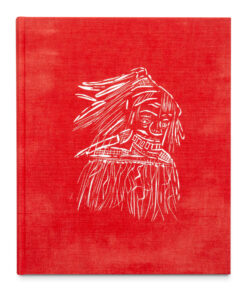
WE THE SPIRITS
Photography fine art book by Jason Gardner, Portraits of traditional Carnival masquerades from 15 countries
GOST Books (UK)
Essay by Giovanni Kezich. Field Notes and all other text by Jason Gardner
PG: Would you recommend someone get feedback about their edit before submitting?
JG: Generally, yes. If that’s possible, some artists don’t like to do that. They like to stay within their vision, and I get that. But because my project could have gone in a few different directions with the edit and with the book, I wanted to. It was not clear-cut, so investing in that was worthwhile.
PG: Were there any surprises from your being a Top 50 finalist?
JG: The pleasant surprise was the level of prestige that I perceived, and other people felt the same. Do you know what I mean? Sometimes, if you think something’s great and you get it, but no one’s heard of it, that’s a significant differential. But people acted as if it was a big success when I announced it—I got a lot of congratulations.
PG: Do you have any other advice for artists about their submissions?
JG: Make sure you’re showing something that will be different, will wow, and stick in the juror’s mind. I know that’s not the easiest thing in the world. One book editor told me, “I just want to see something different. I want you to take me to somewhere that I would never have thought about.” So, with that in mind, look at the previous winners’ work, and keep in mind you don’t want to be the person that repeats someone else’s work.
I had a very positive overall experience with Critical Mass and would do it again when I have the work that I want to submit. I would say that while it is stressful, putting the work out there is important. Critical Mass tends to take work that’s in its gestation period — you’re still writing about it; you’re still figuring it out. Entering CM is certainly a good investment in time — you must figure out the edit and what you’re going to write, and to some extent, you can use that for other submissions. The clearer you can get about your work from the edit and statement — whether for your website or the next application, the more helpful it becomes. So, I viewed my submission as an investment in the future.
PG: Jason, I appreciate you spending time with us today to discuss your work and help others consider their CM24 submissions.
All images in this post © Jason Gardner
Follow Jason on Instagram

